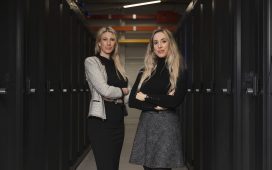Originally posted on IdahoEdNews.org on April 13, 2023
(UPDATED, 4:12 p.m., with details from the University of Idaho.)
In the waning days of the 2023 session, colleges and universities received $72.9 million for building projects.
But the money will leave some work unfunded — and leave the colleges and universities scurrying to cover their remaining costs.
The whole process began in January, when Gov. Brad Little requested $109.9 million for higher ed capital projects.
Little wanted to get $75 million of this money from the state’s new in-demand careers fund — the chunk of money that will ultimately bankroll his Idaho Launch worker training program. But since Launch won’t start up until 2024, Little had a year’s worth of in-demand careers money at his disposal.
But lawmakers had other ideas for this money — such as a one-time infusion into high school career-technical education programs. As a result, the Legislature winnowed down the higher ed capital projects budget to $72.9 million.
And the Legislature’s Joint Finance-Appropriations Committee parceled out this money, roughly, on the basis of higher ed enrollment. That’s why Boise State University received the largest piece of the pie, and Lewis-Clark State College received a far smaller serving.
Some JFAC members called their enrollment-based approach a matter of fairness. JFAC conservatives condemned the idea, saying it would saddle the state with a wish list of partially listed projects.
Let’s dig deeper into where the money went — and how the colleges and universities will spend it.
Boise State University
Little’s request: $30,000,000.
Funding approved: $17,936,000.
The money will go toward a long-range project, addressing a growing need. A 100,000-square-foot science research building would provide classroom, lab and office space for biology, biochemistry, chemistry and physics programs.
Boise State’s graduates in health-related fields and STEM — science, technology, engineering and math — have skyrocketed by more than 90% over the past decade, spokesman Mike Sharp said Thursday. Enrollments in doctoral programs in the sciences have tripled since 2013-14.
“The state-of-the-art facility will allow the recruitment of top researchers, attract new grant funding, and preserve space better utilized for classrooms and teaching labs,” Sharp said.
But even Little’s funding request would have provided only startup money. The building could cost $120 million, and Boise State is looking for donor and grant support, Sharp said.
Boise State hopes to open the building in 2027 or 2028.
College of Western Idaho
Little’s request: $15,700,000.
Funding approved: $15,700,000.
The state’s largest community college fared well in this budget, receiving its full request for two projects:
- A 35,000-square-foot student learning hub, which would house a library and “technology commons,” lab space, career services and a bookstore, among other services.
- Phase two of an agriculture and horticulture expansion, complete with barns, greenhouses and animal facilities.
The two projects carry a total price tag of about $30 million, so CWI will use fundraising and financing to cover the balance, spokesman Ashley Smith said Thursday. The horticulture project could open in 2025; the student learning hub could come online in 2026.
College of Southern Idaho
Little’s request: $11,530,000.
Funding approved: $11,530,000.
Lawmakers fully funded a pair of CSI requests:
- A $9 million renovation project at the Evergreen Building, which houses the agricultural department, physical science labs and other classes. The renovated building will accommodate more students with classroom and study space, and host online and hybrid classes.
- A $2.5 million line item that should fully fund improvements to the CSI data center, and add an emergency generator that will keep online courses in session even during a power outage.
“It will probably take a couple of years to design and complete the projects,” Physical Plant Director Spencer Cutler said.
University of Idaho
Little’s request: $15,500,000.
Funding approved: $8,998,000.
The U of I will split its share of the money around among three projects:
- A dining lodge and kitchen facility at its McCall Field Campus. The new, 8,900-square-foot lodge would have space for 150 students and staff, replacing a facility that can house only 30 students. “While the structure is a part of the memories of the McCall Field Campus for many, the reality is that it is too small, aged, beyond service life, and in need of replacement,” spokeswoman Jodi Walker said. The U of I still needs to raise about $6 million for the $12 million McCall project, and there is no projected completion date.
- A Center for Plant and Soil Health, at the U of I’s Parma research center. This new center, expected to come online this year, would replace facilities that are more than 50 years old.
- A meat science and innovation center. Combining educational, research, event and retail space, this facility is in the design phase. The U of I has a $6.6 million fundraising goal for the project. The university hopes to have the center open in 2025.
One project on Little’s list will not get funding: A shared Reserve Officer Training Corps facility, for Navy and Marines ROTC students.
Idaho State University
Little’s request: $16,000,000.
Funding approved: $8,388,000.
Three projects are eligible for state funding:
- Expansion of Idaho State’s Pocatello-based physician assistant program, the only program of its kind in Idaho.
- Expansion of Idaho State’s health sciences center, on a 22-acre site in Meridian.
- Nuclear research labs, to support a joint Idaho State-U of I program based in Idaho Falls.
“The university is currently working to prioritize the three projects to determine what will move forward,” spokeswoman Emily Frandsen said in an email Thursday. “It is important to analyze the total cost of the project and whether other matching funds are available from philanthropic support.”
College of Eastern Idaho
Little’s request: $8,000,000.
Funding approved: $8,000,000.
The state’s line item will allow CEI to complete Future Tech, its first campus building project in more than 15 years.
CEI says the 88,000-square-foot building will serve about 1,000 students, and a menu of programs that includes cybersecurity, health physics and AgriTech. The ground floor will feature an interactive classroom with space for more than 100 students. A conference center on the second floor will provide meeting space for about 300 people.
CEI had already secured the balance of funding for the $42.8 million project, piecing together grants and donations, federal funding and other state dollars.
With funding in place, CEI hopes to open Future Tech in fall 2025.
Lewis-Clark State College
Little’s request: $6,192,000.
Funding approved: $2,370,000.
Lewis-Clark will put the state money toward two projects:
- Moving workforce training projects into 6,400 square feet of vacant space on the first floor of Clearwater Hall. The college says the move will put its adult learner and small business programs under one roof.
- Converting a dorm into a living and learning center for nursing students, expanding capacity by 20 beds.
Lewis-Clark will need to use other funds to cover the remaining project costs. “While we are appreciative of the capital funding support … we will not be able to follow through on our original plans,” President Cynthia Pemberton said.
A third Lewis-Clark project is on hold: remodeling its Sam Glenn complex, which houses career-technical education and student support services.
North Idaho College
Little’s request: $7,000,000.
Funding approved: $0.
The $7 million would have gone toward a police officer training facility, including a classroom, lab and driving range.










